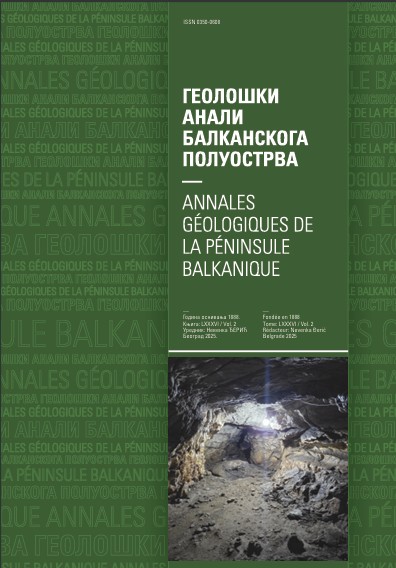Strukture rudnih polja Blagodat i Karamanica prema podacima daljinske detekcije
Blagodat and Karamanica ore field structures according to remote detection data
Abstract
The region of southeastern Serbia is a part of the Serbian Macedonian massif, where tectonic, tectono-metaruorphogenic and tectono-magmatic processes including mineralization operated through its geologic history and resulted in the formation of a structural-geological and metallogenic entity defined as one ore zone. The faulting pattern of the southern part of the zone, within the limits of Blagodat and Karamanica ore fields, is generally analysed in this article on the basis of remote detection from aerial photograps. Besides traditional linear fractures, a number of ring faults have been discerned, as results of magmatic processes and metamorphism. Because injection fractures and structures, in addition to tectonic ones, have a controlling role in localization of numerous endogenic, and metaruorphogenic, mineralizations, the obtained results may have some importance in prediction-study of the local mineralized media, either at the ore zone or polvmetalling ore field level.
Copyright (c) 1997 Geološki anali Balkanskoga poluostrva

This work is licensed under a Creative Commons Attribution 4.0 International License.










